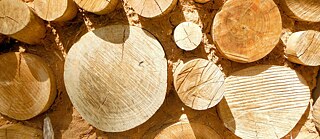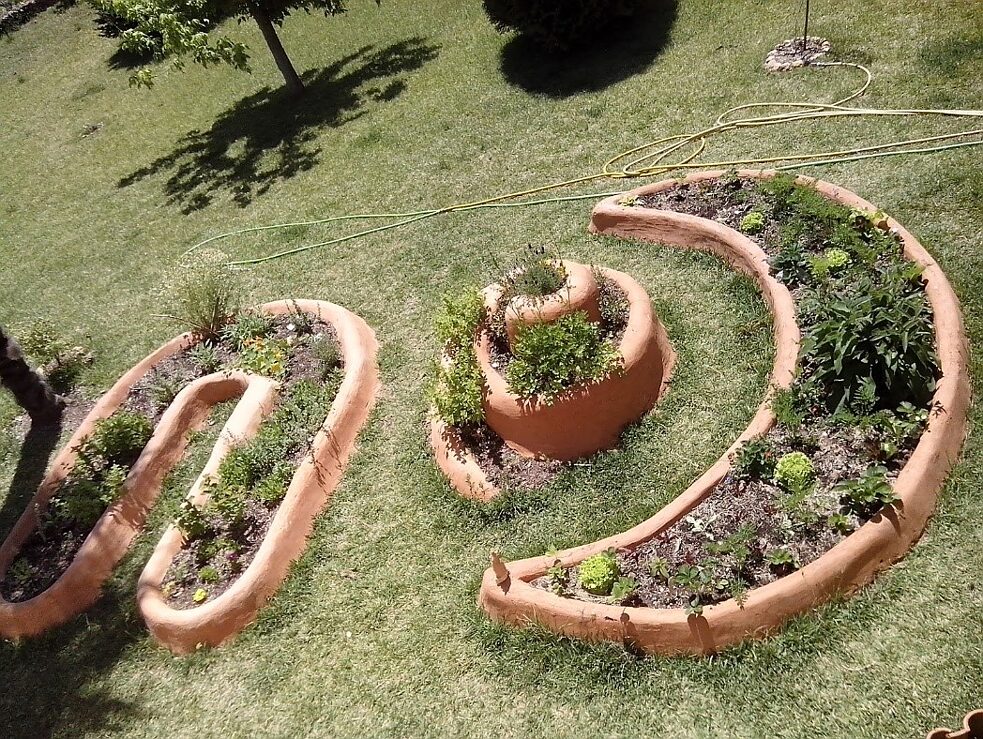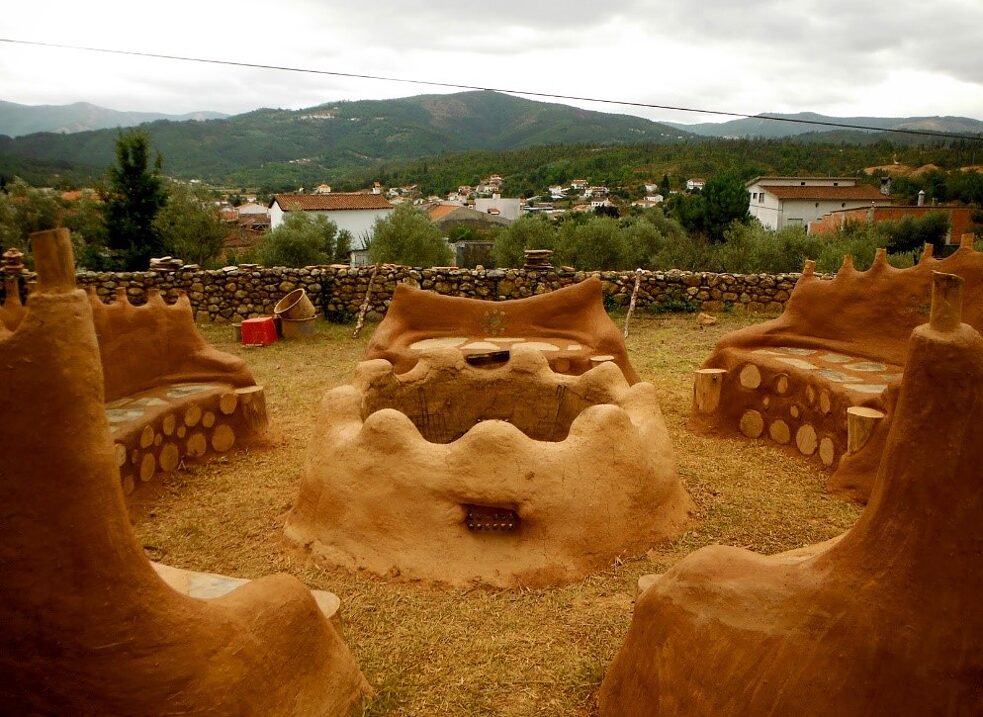Live With Earth Association
By Rui Vasques
Will there be space and living conditions for everyone in the future? Food and pure water for all? Energy and resources? Will there ever be peace, freedom, equality and cooperation among mankind?
The Live With Earth Association represents a global view of this world we live in today with an environmental perspective and a positive attitude to the changes needed for a new way. It looks at how mankind has evolved, expanded and developed their own system of values and beliefs, organising a civilisation that has grown by exploring and exploiting Earth with an objective based on economic growth, forgetting the essentials of human and natural ecosystems. This project looks at the societies of today and natural and human disasters of the present, poses questions and proposals to change their structures, by studying how science, technology and human consciousness can work in tandem to contribute to the welfare of humanity and the environment.
Ultimately, this project represents a social approach to the growth of humankind through design research and the promotion of local actions for global change. It aims to achieve sustainability, self-sufficiency and ecological lifestyles, at micro and macro levels, from the individual to community and the whole humanity.
Our mission is based on four pillars, connected to four elements:
Awareness (Water)
Empowerment (Earth)
Convergence (Fire)
Innovation (Air)
By applying these pillars as a framework and building solutions around the principles of the circular economy, autonomy, decentralisation and self-sufficiency, we grow impact in our personal lives, as well as at a national and international scale, We believe in a society that is able to produce their own basic resources (water, shelter, food, medicine, knowledge, energy) in abundance, free of charge and destruction, and in harmony with nature.
The Live With Earth organisation acts by reconnecting people with nature, natural elements and sources of life. In this way, we believe humans can get back to their essence, filtering the excess of noise and pollution from modern societies and cities, and recovering the pure essence of being, in their truth and simplicity. Between rural and urban areas, our approach for developing awareness, empowerment, convergence and innovation, changes according to each specific situation and environment:
As a vision for the future, we work for a balanced interconnection between rural and urban areas to seek potential synergies, using the best combinations of the diversity and the differences that each one has to offer. Cities are centers of knowledge, innovation, sophistication, multicultural exchange and connectivity of opportunities. Villages are places of peace, health, life quality, time and space, natural capital abundance, and where sources of productivity are merged with the sources of life.
Some projects by the association include:
The Live With Earth Association represents a global view of this world we live in today with an environmental perspective and a positive attitude to the changes needed for a new way. It looks at how mankind has evolved, expanded and developed their own system of values and beliefs, organising a civilisation that has grown by exploring and exploiting Earth with an objective based on economic growth, forgetting the essentials of human and natural ecosystems. This project looks at the societies of today and natural and human disasters of the present, poses questions and proposals to change their structures, by studying how science, technology and human consciousness can work in tandem to contribute to the welfare of humanity and the environment.
Ultimately, this project represents a social approach to the growth of humankind through design research and the promotion of local actions for global change. It aims to achieve sustainability, self-sufficiency and ecological lifestyles, at micro and macro levels, from the individual to community and the whole humanity.
Our mission is based on four pillars, connected to four elements:
Empowerment (Earth)
Convergence (Fire)
Innovation (Air)
By applying these pillars as a framework and building solutions around the principles of the circular economy, autonomy, decentralisation and self-sufficiency, we grow impact in our personal lives, as well as at a national and international scale, We believe in a society that is able to produce their own basic resources (water, shelter, food, medicine, knowledge, energy) in abundance, free of charge and destruction, and in harmony with nature.
The Live With Earth organisation acts by reconnecting people with nature, natural elements and sources of life. In this way, we believe humans can get back to their essence, filtering the excess of noise and pollution from modern societies and cities, and recovering the pure essence of being, in their truth and simplicity. Between rural and urban areas, our approach for developing awareness, empowerment, convergence and innovation, changes according to each specific situation and environment:
- In rural areas, we focus on observing, mapping, using and maintaining the natural local resources, services and successful models, for producing, consuming and interacting in sustainable and healthy ways, integrating human activities with the intelligence of the ecosystems.
- In urban areas, we focus on enabling existing systems to be more efficient, filtering excess information, pollution and materials, recycling and conserving resources such as water and energy, as well as creating awareness to inspire citizens to lead more sustainable lifestyles and develop healthy relationships with their conscious communities through greater cooperation and less competition.
As a vision for the future, we work for a balanced interconnection between rural and urban areas to seek potential synergies, using the best combinations of the diversity and the differences that each one has to offer. Cities are centers of knowledge, innovation, sophistication, multicultural exchange and connectivity of opportunities. Villages are places of peace, health, life quality, time and space, natural capital abundance, and where sources of productivity are merged with the sources of life.
Some projects by the association include:
- Fire Mandala & Clay Gardens
- Flor de Fogo (The Fire Flower) - by Live With Earth & Casa Bô
Fire Mandala and Clay Gardens were built during a certified Permaculture Design Course planned and organized by Live With Earth and New School Permaculture in 2014 with invited professor Hélder Valente.
Permaculture means to create and develop a “Permanent Culture“ between human beings and all the other species. It is a way of thinking, of living and of approaching others and ourselves. It requires us to observe nature and interact with it based on its feedback from our actions, through the signs of a natural language that we learn with time. It promotes self-sufficiency in all contexts: a rural farm, a family house or industrial complex or company. Permaculture has three ethics: to take care of the Planet, take care of the People and Fair Share.
The Clay Gardens was built during the course, for the production of vegetables, aromatics and flowers, near the kitchen. This garden is still in use, in the circular model between growing organic food, cooking organic meals, composting organic waste and producing good soil to nourish back in the cycle, while developing and promoting growth of biodiversity.
The Fire Mandala was built with the intention of testing the clay of the land, in the usage of Cordwood technique, and shale / shist stone. With an organic line, plasticity was the key to understanding the potential of the pure clay, and round and elegant shapes were achieved during the process. Designed by Rui Vasques and Francisco Filipe, five big thrones were built around a big fire circle, ventilated with four directions of the wind for spiraling the hot hair, and controlled by 4 entrances of air to open or close. It is a place of circle, encounter, sharing and enjoying life around the fire, in all it's sacredness and beauty.
For Culture | Smart Cities, I propose to experiment using the twelve principles of permaculture design in smart cities. It is an opportunity and invitation to create using ecological thinking and intelligent efficient approach. Embracing the complexity of the cities, and their diversity and potential, we encourage every sector involved in its parts, to adapt this tool in their strategies and social approach.
The Fire Flower project was implemented in 2019 and is based on the concept of the Circular Economy. Participants recalled our ancestrals and their practices and knowledge, by building and honouring the circle of fire, and the creation of an earth oven, to cook bread, pizza and other kinds of food. It was also a way to generate abundance, a base of production and source of income for everyone. Designed and teached by Rui Vasques, the project was a unique opportunity, as all of these happened inside a city, contradicting all the grey concrete around - the noise, the pollution, the stress, and the fast forward ways of living. The Fire Flower is a space for reconnection, with inner self, with others, and with the natural rhythms of life.
It aimed to raise awareness, about oneness, good practices of healthy living, conscious consumption, and the multiple ways to explore our inner worlds, through outer expressions and materialisation. Towards collective manifestation, the participants learnt and developed design, project methodology and sustainable construction skills together, using the local services, partners and (natural) materials, using Superadobe technique, Cob, and natural earth plasterings.
Cities are places full of resources, some of them even what most people would consider “waste”. There exists a huge opportunity for recycling, reutilisation, and exploring these materials in different ways. Most of the materials used to construct the Fire Flower were collected around the city, such as stones (rests from a stone deposit), clay (rests from a road municipal maintenance construction), and other recycled materials.
It was also important that we were conscious of the quality and the origin of the food we eat, as it is the energy fuel for us. The meals were vegetarian, and when possible local and organic. Some of them were also recycled from stores or supermarkets. This project is a great example of developing and practicing Circular Economy models as forms of ethical and efficient ways of acting and creating partnerships and projects.
These unique moments, from theoretical sessions to practical works, flowing with permanent moments of celebration of life, unity, new connections and common evolution, demonstrate the many possibilities of co-creating the sustainable solutions that can bring a prosperous future.


